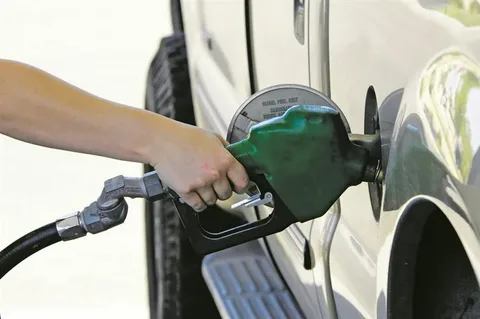Accidentally putting petrol in a diesel car is a common but potentially costly mistake. Whether you were distracted at the pump or borrowed a car with an unfamiliar fuel type, it’s essential to know the warning signs, the potential damage, and what steps to take next. This comprehensive guide will walk you through everything you need to know to address the issue promptly and effectively.
What Happens When You Put Petrol in a Diesel Car?
Diesel engines operate differently from petrol engines. Diesel fuel acts as both a lubricant and a combustible fuel, crucial for the engine’s components to function smoothly. Petrol, on the other hand, is a solvent. When introduced into a diesel system, petrol can cause extensive damage by stripping away lubrication and leading to friction between key components.
Key Risks:
- Component Damage: Petrol compromises the fuel pump and injectors.
- Contamination: Mixing petrol with diesel can lead to sludge in the fuel system.
- Engine Failure: Prolonged running of a diesel engine with petrol can result in catastrophic engine failure.
Signs You’ve Put Petrol in a Diesel Car
Detecting the mistake early is critical. Here are some warning signs to watch out for:
1. Difficulty Starting the Engine
If the car struggles to start or refuses to start at all, this could indicate contamination in the fuel system.
2. Unusual Noises
A clattering sound or knocking noise from the engine may suggest that petrol is causing damage to the fuel pump or injectors.
3. Poor Performance
A noticeable drop in acceleration, power, or responsiveness can signal that the wrong fuel is disrupting the engine’s combustion process.
4. Excessive Smoke
White or grey smoke from the exhaust could be a sign that petrol is not burning properly in the diesel engine.
Immediate Steps to Take
If you realize you’ve put petrol in a diesel car, acting quickly can minimize the damage. Follow these steps:
1. Do Not Start the Engine
Starting the car circulates the contaminated fuel, increasing the risk of damage. If you haven’t started the car yet, you’re in a better position to mitigate the issue.
2. Call for Professional Help
Contact a roadside assistance service or a specialist in fuel drainage. These professionals can safely remove the contaminated fuel and flush the system.
3. Inform Your Insurance Provider
Depending on your policy, your insurance may cover the costs associated with this mistake.
4. Avoid DIY Fixes
Attempting to drain the fuel tank yourself without proper tools and expertise can be dangerous and may void your car’s warranty.
Consequences of Petrol in a Diesel Car
Failing to address the issue promptly can lead to significant mechanical problems, including:
- Fuel Pump Failure: Diesel pumps rely on the lubricating properties of diesel fuel, which petrol cannot provide.
- Injector Damage: Petrol can cause overheating and damage to the injectors, leading to costly repairs.
- Engine Seizure: In extreme cases, prolonged use of the wrong fuel can result in complete engine failure.
Cost of Repairs
The financial impact of putting petrol in a diesel car can range from £200 for fuel draining to over £10,000 for full engine replacement in severe cases.
How to Fix the Issue
Fixing the problem depends on the severity of the mistake. Here’s an overview of the possible solutions:
1. Fuel Drainage
Professionals will remove the contaminated fuel and flush the system to ensure no petrol remains in the tank or fuel lines.
2. Component Inspection
A mechanic will check for damage to the fuel pump, injectors, and other key components. Early detection can prevent more expensive repairs.
3. System Refill
After draining and flushing, the tank will be refilled with clean diesel fuel to restore proper engine function.
4. Regular Monitoring
Post-repair, keep an eye on your car’s performance to ensure no residual issues linger.
Tips to Avoid Putting Petrol in a Diesel Car
Prevention is always better than cure. Use these tips to avoid making the same mistake again:
- Label the Fuel Cap: Use a sticker or tag to indicate the fuel type clearly.
- Double-Check at the Pump: Take a moment to confirm the fuel type before refueling.
- Opt for Diesel Nozzle Locks: Some vehicles can be fitted with devices that prevent petrol nozzles from being inserted into diesel tanks.
- Educate New Drivers: Ensure anyone borrowing your car knows the correct fuel type.
Conclusion
Putting petrol in a diesel car is an error that can lead to severe consequences if not addressed promptly. However, by recognizing the warning signs and taking immediate action, you can minimize the damage and associated costs. Always double-check your fuel choice to avoid this mistake, and don’t hesitate to seek professional assistance if it happens.
Check out more valuable articles here.









